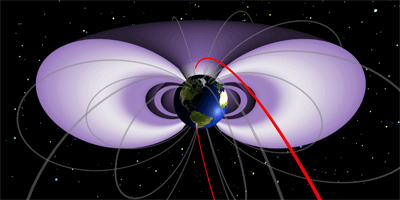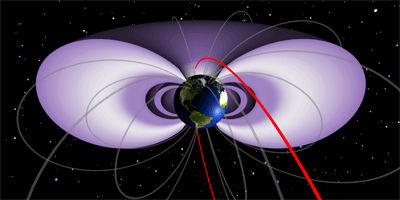Electron Bounce
Solar winds and cosmic rays continually feed charged particles into the radiation belts trapped by Earth’s magnetic field. These high-speed particles pose a hazard to space missions and orbiting satellites, so scientists are considering various schemes to drain or divert them. Now, experiments published in Physical Review Letters show that a type of magnetic wave that propagates in a plasma is unexpectedly effective at scattering trapped, energetic electrons.
Yuhou Wang at the University of California, Los Angeles, and her colleagues discovered the strong wave-particle interaction using the Large Plasma Device, a -meter-long cylindrical plasma chamber, housed on the UCLA campus. With microwaves, the researchers heat a fraction of the plasma electrons, which are then trapped in a magnetic potential well, mimicking that of the Earth. In this setup, the electrons, which have energies of up to mega-electron-volts, are detected by x rays that they produce upon colliding with the chamber walls.
The magnetic field lines and surrounding plasma in the chamber are analogous to a massive string that can be “plucked” to produce waves by introducing an oscillating magnetic field. Wang et al. find that when they create such waves, called Alfvén waves, with a small radio-frequency antenna, they see a sizable burst of x rays, suggesting that the waves have strongly scattered the electrons.
For now, Wang et al.’s experiments provide a controlled environment in which to study wave-particle interactions in a plasma that could prove useful for diverting electrons in Earth’s radiation belts. – Jessica Thomas





